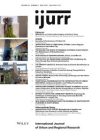It is a widely held notion, disseminated in particular by the LA school of urban studies, that gated communities are enclaves, which not only maintain segregation but also help increase it. In Chile a more benevolent interpretation has arisen. Sabatini, C´ceres and Cerda argue that gated communities help out the poor communities that surround them. If the spatial scale of segregation is reduced — from city to local or neighborhood level — social disintegration should slow, according to their analysis. This article seeks to empirically complement and expand on Sabatini, Caceres and Cerda’s position, which seems to be a better interpretation of Chilean reality than the grim picture presented by the LA school. The article is an ethnographic work based on in‐depth interviews in gated communities and a surrounding shantytown in the Huechuraba district, a lower socio‐economic class area in north‐west Santiago. The research concludes that, despite the existence of a wall that promotes community integration among so‐called equals, in conditions of spatial proximity sociability between inside and outside groups is not diminished. Thus, in Huechuraba there is no impenetrable wall separating poor and rich; equally, the walls do not seem to promote community integration within. Spatial proximity has encouraged relations mainly in the realm of functional exchange, making the creation of gated communities in poor neighborhoods a socially desirable experience, at least in the case of Santiago.
Details
Written by:
Rodrigo Salcedo, Alvaro Torres
Digital Object Identifier (DOI)
10.1111/j.0309-1317.2004.00501.x
About DOI
Read full article as PDF
Read full article as HTML
See the references for this article
